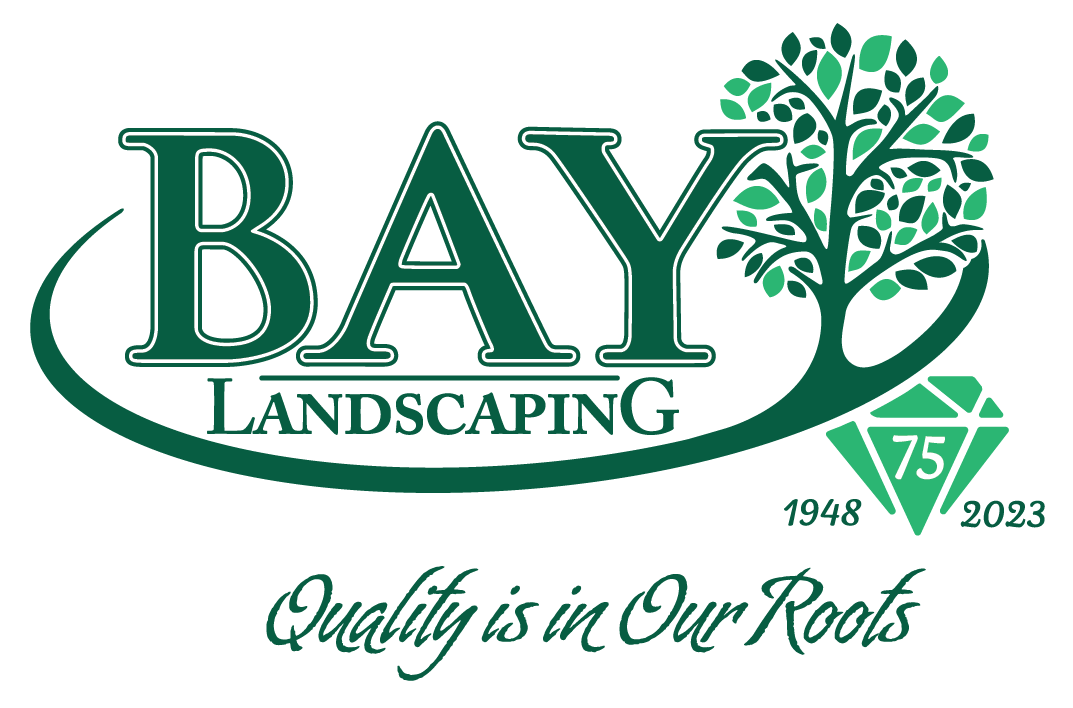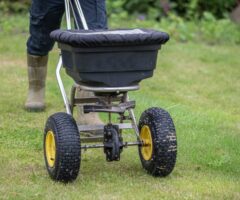As winter approaches, you may be wondering if you should seal your exterior hardscape surfaces (such as driveways, walkways, patios, and stepping stones) or if are they naturally durable enough not to need sealant. When should you seal hardscaping? Will salt and de-icers used in winter cause irreparable damage if surfaces aren’t sealed? What type of sealant product should you use?
In a nutshell, yes, you should include exterior sealants on your list of maintenance best practices (unless you’re going for a worn and weathered look). Keep reading to learn:
- why it’s important to seal hardscape surfaces, especially those that will be affected by winter salt and de-icers,
- how salt and de-icers corrode hard surfaces (it’s not pretty!),
- what to consider when choosing an exterior sealant,
- which sealant we recommend, particularly for concrete surfaces, and
- tips to help you apply sealant like a pro.
If you’re not sure where to start in choosing or applying a sealer for your driveway, walkway, or patio, after reading this, we can help. Just give the friendly staff at Bay Landscaping a call and we’ll be happy to walk you through the options.
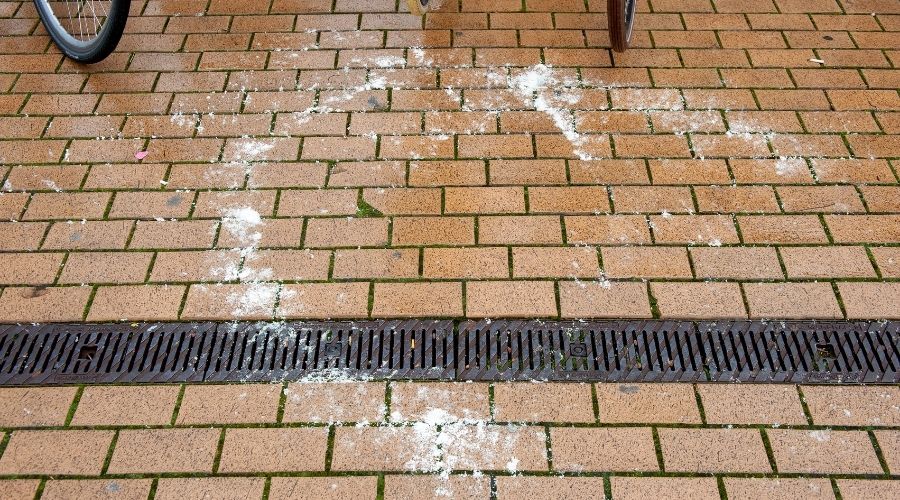
Winter use of rock salt and de-icers can quickly stain and damage hardscape surfaces.
Deciding Whether to Seal Hardscape Surfaces
Whether or not you use sealant on your exterior surfaces is usually an individual choice. But there are a few criteria to consider, such as:
- The age of your hardscape. Is it new, or existing? This doesn’t have to be a deciding factor, though many people want to do everything they can to keep new driveways and walkways in top condition. Existing surfaces will also benefit from sealants—you’ll just have to do a little more prep work.
- Do your surfaces get treated with winter road salt or chemical salt melt? If so, you might want to consider sealing them, whether they’re newly installed or have been around for a while. Winter salt and de-icers are corrosive to concrete, asphalt, and stone, but it’s never too late to protect them.
- Can the surface be easily stained? For example, flagstone paving near an outdoor kitchen can easily get grease stains from cooking, while concrete patios near deciduous trees can develop brown stains from fallen leaves that aren’t cleared away before they’re covered with snow.
- Does the area get a lot of foot traffic? If so, you’ll probably want to seal the surface to prevent damage that could cause a tripping hazard. Sealant will also help protect against corrosion from salt and de-icers tracked in on the bottom of winter boots.
How Winter Damages Your Hardscaping
Cheap and readily available, road salt is used extensively throughout the Midland, Bay City and Saginaw area to keep roads and walkways free of snow and dangerous ice. While we all appreciate safe surfaces for walking and driving during winter’s harsh, cold weather, we may not be as pleased with the corrosive damage that results.
Corrosion from Salt & De-icers
Corrosion of hardscape surfaces results from the way rock salt and other chemical de-icers “burn” into them. If you’ve ever tried to unscrew a metal top from an old, unused saltshaker, you’ve seen how even table salt (which is different from road salt) can damage strong materials over time.
Corroded surfaces develop pits, cracks, and holes over time, as harsh road salt and de-icing chemicals break them down and penetrate their surface. Once the protection provided by the surface is breached, corrosion continues and eventually becomes visible. Even concrete, one of the most durable hardscape materials we use, is not immune.
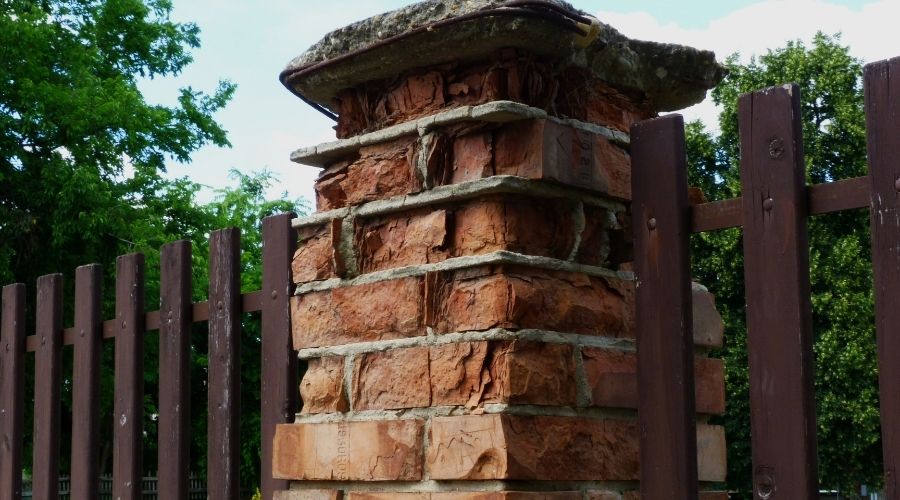
This unsealed brick fence post has corroded bricks caused by winter freeze-thaw damage.
Effects of Winter Weather
Corrosion is exacerbated by winter weather cycles. Water from rain or melted snow enters the pore spaces in hardscape materials and collects there. The same cycles of freezing and thawing we see on surfaces occur within the material, forcing cracks to form or existing cracks to widen.
The more porous the material (such as soft clay bricks and natural stone), the worse the damage caused by winter freezing. For example, low-strength concrete is lighter weight and less able to resist freezing and thawing cycle stresses, making it more likely to corrode and crack. And newly installed concrete has a higher internal water content than older, existing concrete, so sealing new concrete can help prevent corrosion that would otherwise intensify internal freezing and thawing damage.
You may see your concrete surface flaking as well. This is called “spalling” and is another symptom of corrosion. Spalling also occurs in pavers such as bricks, patio pavers, and stepping stones.
Thankfully, much of this winter hardscape damage can be prevented by a single application of the right sealant.
About Outdoor Surface Sealants
There are many different types of sealants on the market. How do you choose which one is best for your particular application? Aside from hiring a professional to seal hardscape surfaces for you (Hint: Give Bay Landscaping a call!), you’ll have to consider the following:
Type of Sealant
Surface sealants work in one of two ways: They coat a surface or they penetrate a surface.
What’s the difference? Both protective methods work, but the make up of the sealer determines how the product works.
- Coating sealants form a continuous, protective layer atop a surface.
- Penetrating sealants enter the pores of a surface and bond to them.
Sealant Base
Another important difference is what kind of base your sealant is made from:
- A resin- or acrylic-based sealer is water-soluble, meaning you can clean up your tools with soap and water.
- A solvent-based sealer and a sealer with silicone in it will require you to use mineral spirits to clean up.
- Solvent-based sealers and water-soluble sealers may also have different drying or curing times, so plan according to the specifics of the product you choose.
- Water-based and solvent-based sealers may have different lifespans and re-application guidelines, so check the manufacturer’s recommendations for re-applying.
Material Being Sealed
Another consideration is the material you’re sealing. Some sealers work best on smooth surfaces; others are designed for rough or coarse surfaces. This is also where porosity comes into play; will the material absorb the sealant or will it stay mostly on the surface? Here again, you’ll want to follow label instructions and suggestions.
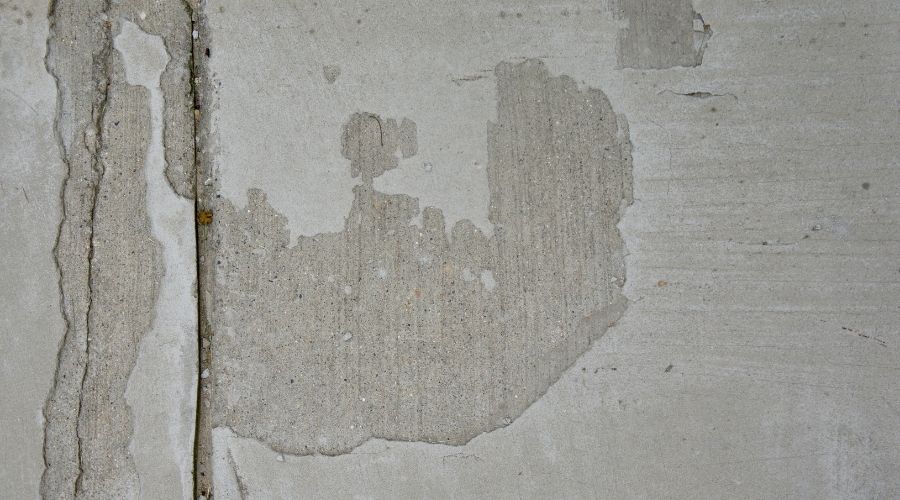
Even concrete is prone to winter damage if it’s not properly sealed. The surface of this sidewalk is flaking or peeling away (spalling) after sustaining winter damage.
Preparation
Before you start, the surface will need to be clean and dry. This means you’ll have to plan, giving yourself enough time to wash your driveway or walkway, let it thoroughly dry, and then have clear weather while you apply the sealant.
Number of Coats Required
With many sealers, you can cover and seal in one coat. But always check the label to make sure one coat will give you the protection you need.
Application Method & Equipment
And while the base of the sealant may not matter to you, it will determine the equipment you use. Some sealers are best applied with a roller or mop, others with a sprayer. You’ll want to follow the manufacturer’s instructions, as proper application is how you’ll achieve the product’s promised results.
Why we Like Lifetime Waterproofing Sealant
Since concrete is one of the most common hardscape materials, we chose a product that works best with the native qualities of concrete. The main quality of concrete that determines our choice is porosity. Since a solvent-based sealant works best on a porous surface, we chose LifetimeTM Waterproofing Sealant, a solvent-based sealant that protects surfaces for 20 years.
Other benefits are that Lifetime sealer includes agents that prevent or retard surface mildew and fungus growth, which keeps your concrete cleaner-looking and makes it less slippery. And—importantly—Lifetime is made with silicone and does not photo-degrade (degrade from sunlight’s UV rays) so a single application has a long lifespan.
Lifetime Sealant also works with just one coat, meaning it takes less time to apply. Just don’t forget that the concrete will need to be clean and dry before you start. You’ll need to give yourself enough time to wash your driveway or walkway, let it thoroughly dry, and then have clear weather while you apply the seal.
PRO TIP: Diluting your sealer or mixing it with other products will make it less effective and will negate its product guarantee. And remember that once you open the container to use it, its curing process begins. Don’t leave it unused or unsealed; apply it right away.
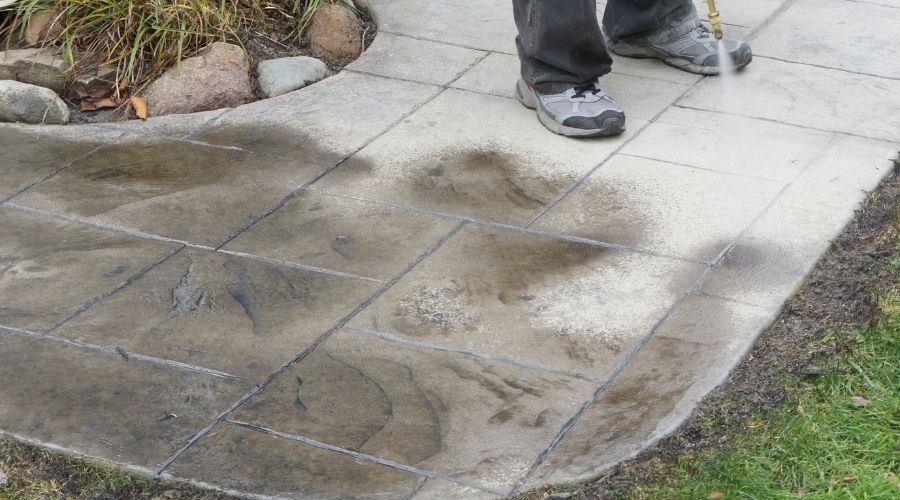
Hardscape sealants can be applied in different ways. The key is to ensure the surface is clean and dry before application and that you cover the entire surface evenly.
Sealant Application Tips
Besides the tips we’ve already mentioned, there are some things to avoid when applying a sealant to your landscape hardscaping.
- If you are using a sprayer, avoid overspray. Sealers can damage or kill foliage. If your driveway or walkway is surrounded by plants, keep them away by tying them back and covering them. Remember that you need your surface to be dry, so you can’t wash off foliage while you’re applying sealer (it won’t work if water spray wets the concrete).
- Wear protective gear. You’ll want to avoid breathing in sealant vapors and keep sealant away from your skin and eyes. Gloves and a mask are recommended. Always wash your hands after use, even if you wore gloves, and always wash spilled sealer off your skin immediately.
- Don’t apply a sealer with silicone to painted surfaces, and don’t paint over a sealed surface. Silicone has great water-resisting properties, but those same properties mean other materials like paint won’t bond to it. You may have used caulk that is labeled non-paintable; chances are it’s a caulk with silicone in it.
- Don’t apply a sealer without testing it first. Read the label to see if there is information about the potential discoloration of your surface material. Then test a small area to see if there are any visible changes that you don’t want.
Bay Landscaping Applies Hardscape Sealant for You
If you have a lot of surfaces to cover, it may not be practical to DIY sealant application. Surface preparation and application can take a long time, and an experienced crew can finish the task much sooner than one person can. A crew will also have the equipment needed to do a thorough cleaning and a professional application, saving you from having to buy materials that you may use only once.
If you’d like a hand with sealing your driveway, walkways, patios, or decks, give us a call at 989-893-0000. Our landscape maintenance professionals will give you an estimate for both cost and time and can tell you more about our real-world experience applying sealers, as well as their long-term performance.
